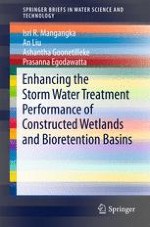2016 | Buch
Enhancing the Storm Water Treatment Performance of Constructed Wetlands and Bioretention Basins
verfasst von: Isri R. Mangangka, An Liu, Ashantha Goonetilleke, Prasanna Egodawatta
Verlag: Springer Singapore
Buchreihe : SpringerBriefs in Water Science and Technology
